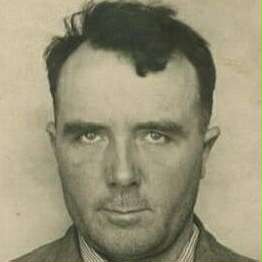
d: 1927
Frank Carter
Summary
Name:
Frank CarterNickname:
Omaha SniperYears Active:
1926Status:
ExecutedClass:
Serial KillerVictims:
2Method:
ShootingDeath:
June 24, 1927Nationality:
Ireland
d: 1927
Frank Carter
Summary: Serial Killer
Name:
Frank CarterNickname:
Omaha SniperStatus:
ExecutedVictims:
2Method:
ShootingNationality:
IrelandDeath:
June 24, 1927Years Active:
1926bio
Frank Carter was born as Patrick Murphy in County Mayo, Ireland, in 1881. He later emigrated to the United States and eventually settled in the Midwest, where he worked various manual labor jobs, including as a farmhand and city laborer.
Carter's documented criminal behavior began not with murder, but with a cruel act of animal violence. In 1916, while living in Iowa, he was sentenced to 10 years in prison for maliciously slaughtering an entire herd of dairy cattle. These animals belonged to Otto Schoeneman, a former employer who had dismissed Carter following a personal dispute. In an act of revenge, Carter snuck onto Schoeneman's farm and killed the cattle. He later warned Schoeneman from prison: “I’ll get you when I get out.”
After serving only four years, Carter was paroled in 1920. His obsession with revenge continued. In 1925, he began threatening Otto’s son, Verne Schoeneman. One night, Verne believed Carter was attempting to break into his home. Hearing someone quietly entering through the back door and walking upstairs, Verne shot the intruder, only to find out he had fatally wounded his own new farmhand, Charles Van Meeteren.
murder story
The crimes that brought Frank Carter national infamy occurred in February 1926. In a spree of sniper-style shootings across Omaha, Nebraska, and nearby Council Bluffs, Iowa, Carter used a .22 caliber pistol equipped with a silencer to kill two confirmed victims and wound others. His targets appeared random, though many were shot while standing near windows in their own homes, sparking fear throughout the community.
The first known victim was a local mechanic in Omaha. Not long after, Dr. Austin Searles, a well-known physician, was fatally shot. A railroad detective in Council Bluffs was also targeted and shot six times. Carter’s calculated use of a silencer allowed him to strike stealthily, inducing mass panic. The city of Omaha went into partial lockdown—lights were turned off at night, public venues were deserted, and people stayed indoors in fear of becoming the next random victim.
The terror spread to public spaces as Carter fired into a downtown drugstore and reportedly shot indiscriminately at lighted windows. Authorities were overwhelmed, and public anxiety was so severe that newspapers urged people to blackout their homes. Streets emptied, and commercial activity halted for more than a week. These were considered some of the darkest days for Omaha in that era.
Carter was finally captured in Bartlett, Iowa, roughly 30 miles south of Council Bluffs. After his arrest, he admitted to the sniper murders and claimed to have killed as many as 43 people. However, journalists and law enforcement dismissed most of these claims as fabrications or delusions, with The Lexington Herald-Leader stating that many were "obviously fictitious."
Carter was charged with the murders of Dr. Searles and the mechanic William McDevitt, though the latter charge was eventually withdrawn. During his trial, his attorneys attempted an insanity plea, but the jury convicted him of first-degree murder in Dr. Searles’ case. Carter was sent to the Nebraska State Penitentiary and given the inmate number #9277.
On June 24, 1927, Frank Carter was executed by electrocution. As he sat in the electric chair, he reportedly said, “Let the juice flow,” moments before his death. His life ended in the same month he had been born 46 years earlier.
Though only two murders were confirmed, Carter’s case remains one of the earliest instances of widespread public panic triggered by a lone gunman in the United States, and his persona as “The Omaha Sniper” left a lasting impression on early 20th-century crime reporting.